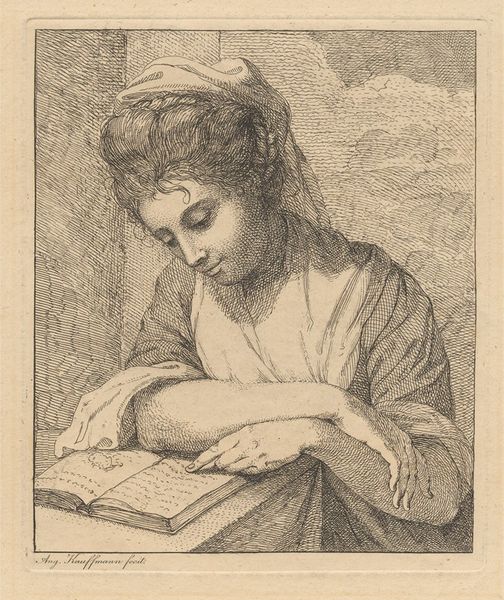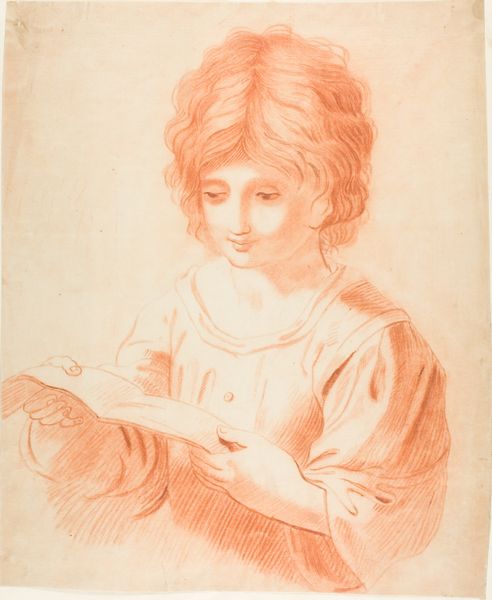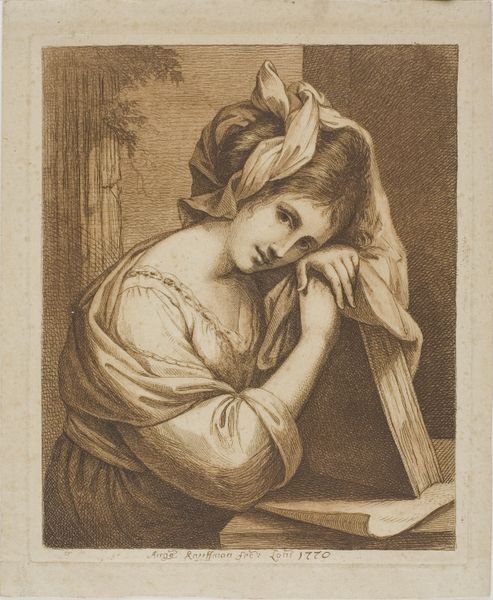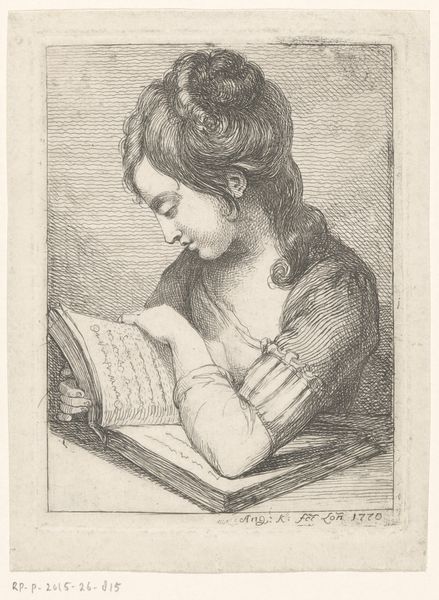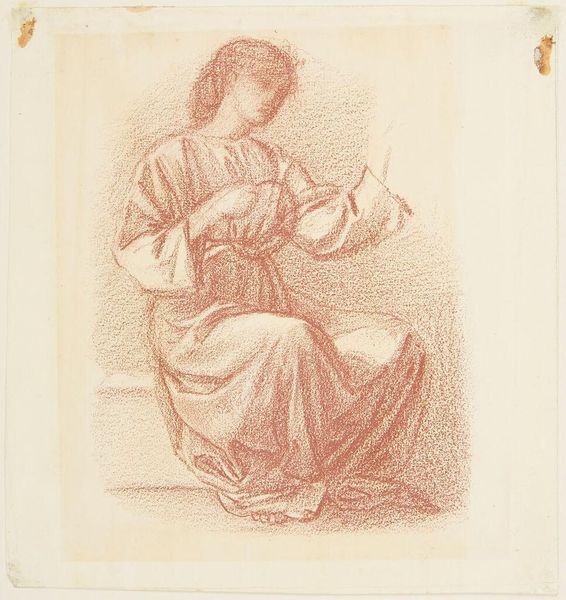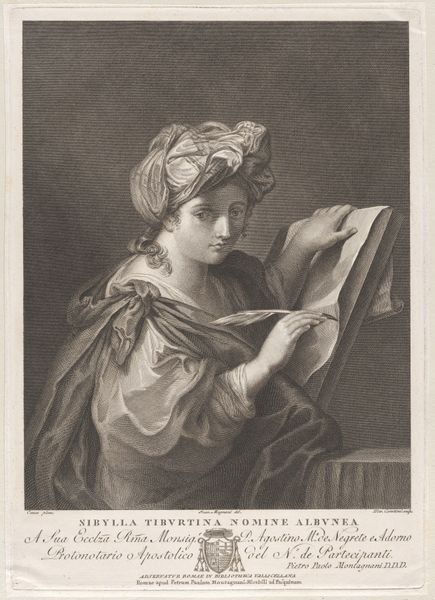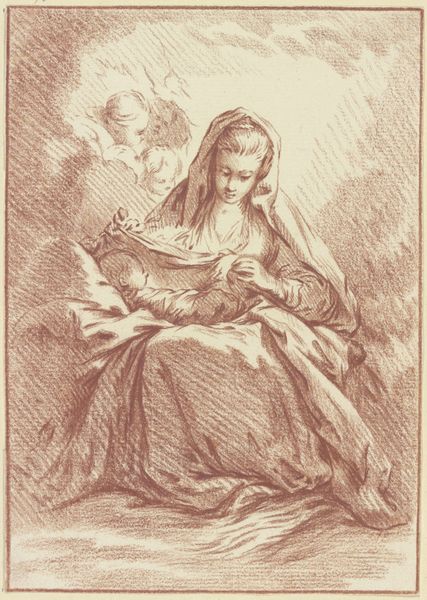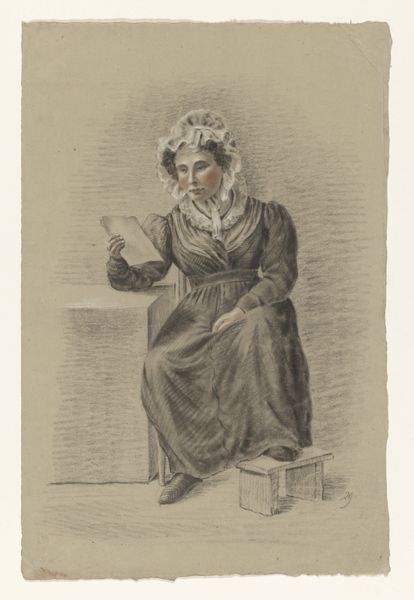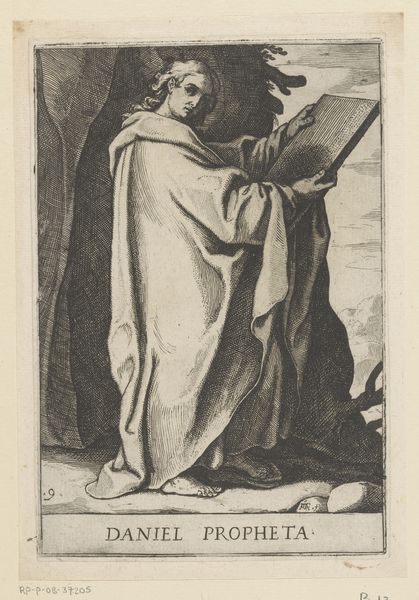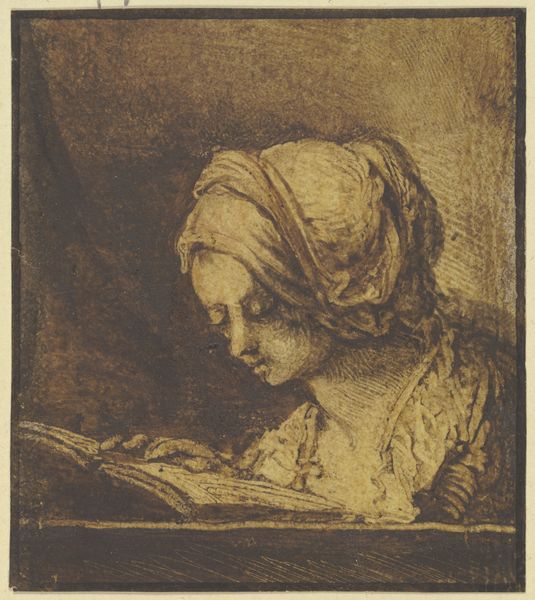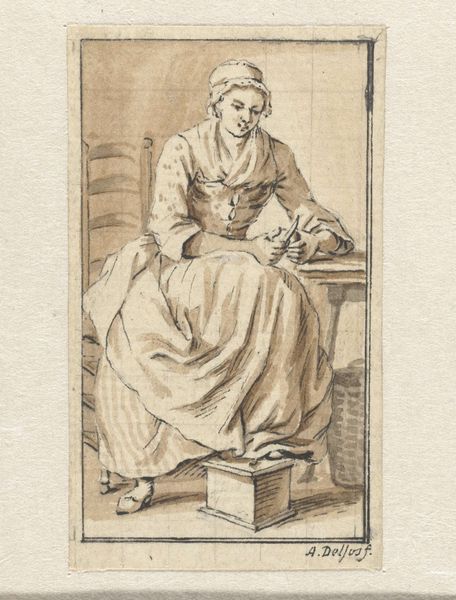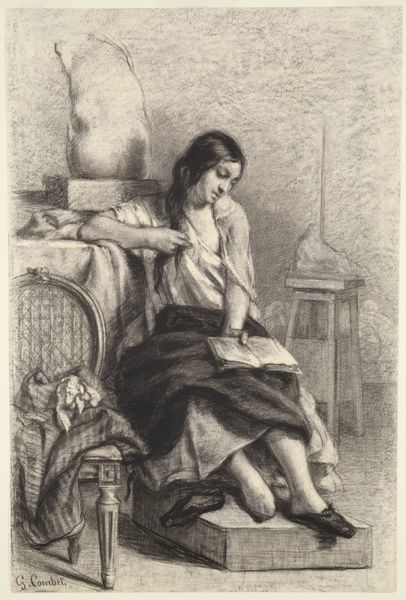
print, paper, engraving
#
portrait
#
neoclacissism
# print
#
figuration
#
paper
#
pencil drawing
#
engraving
Dimensions: 218 mm (height) x 185 mm (width) (bladmaal), 190 mm (height) x 157 mm (width) (plademaal)
Curator: Let's turn our attention to "Den laesende pige," or "The Reading Girl," a 1781 print by Angelica Kauffmann. Editor: The first thing that strikes me is the delicacy of the lines; it's a tender, almost melancholic portrait. What material did she use for the drawing? Curator: Actually, it is an engraving by John Boydell, based on Kauffmann's design, carefully incised onto a metal plate, which gives the impression of a reddish chalk. We have here a reproductive print and not a unique work of art. We need to appreciate the level of skilled craftsmanship involved. The process included transferral of the original image from one medium to another. Editor: Right. Kauffmann’s artistry is disseminated through Boydell's labor and technical skill. Considering the era, prints like these democratized art to a degree, allowing wider audiences—especially women—access to artistic expression and knowledge, though filtered through a male engraver. Curator: Exactly. And look at how the engraver skillfully mimicked the look and feel of chalk drawing with these very fine lines. See how he suggests the soft drapery, and the textures of the paper through hatching and cross-hatching? Editor: The pose is intriguing. The figure looks inward, lost in the text, but the presentation flattens the model. This flattened representation speaks to the larger context of women and representation at the time and a need to produce, market and consume them to an emergent public, even one based on an aesthetic notion. Curator: It reflects, in some ways, the larger Neoclassical aesthetic, with its emphasis on idealized form and refined sensibility and perhaps hints to intellectual pursuits. Editor: Although in this case it's very clear, she's also there for the male gaze, the symbol of female intellect and literacy being somewhat fetishized for this time period. We need to ask if she is even reading or just posing. Curator: That's an excellent point. It's an intriguing dance between accessibility and perhaps reinforcing particular roles and gender expectations within the art world, both on the creating and viewing side. Editor: Seeing art through a gendered lens is so important; and this is precisely why dialogue like this is so crucial. It forces us to question not only what we see but how we interpret it. Curator: Yes, thinking through the material and historical forces makes for a richer experience. It illuminates the multiple hands and social conditions behind a seemingly simple portrait.
Comments
No comments
Be the first to comment and join the conversation on the ultimate creative platform.
